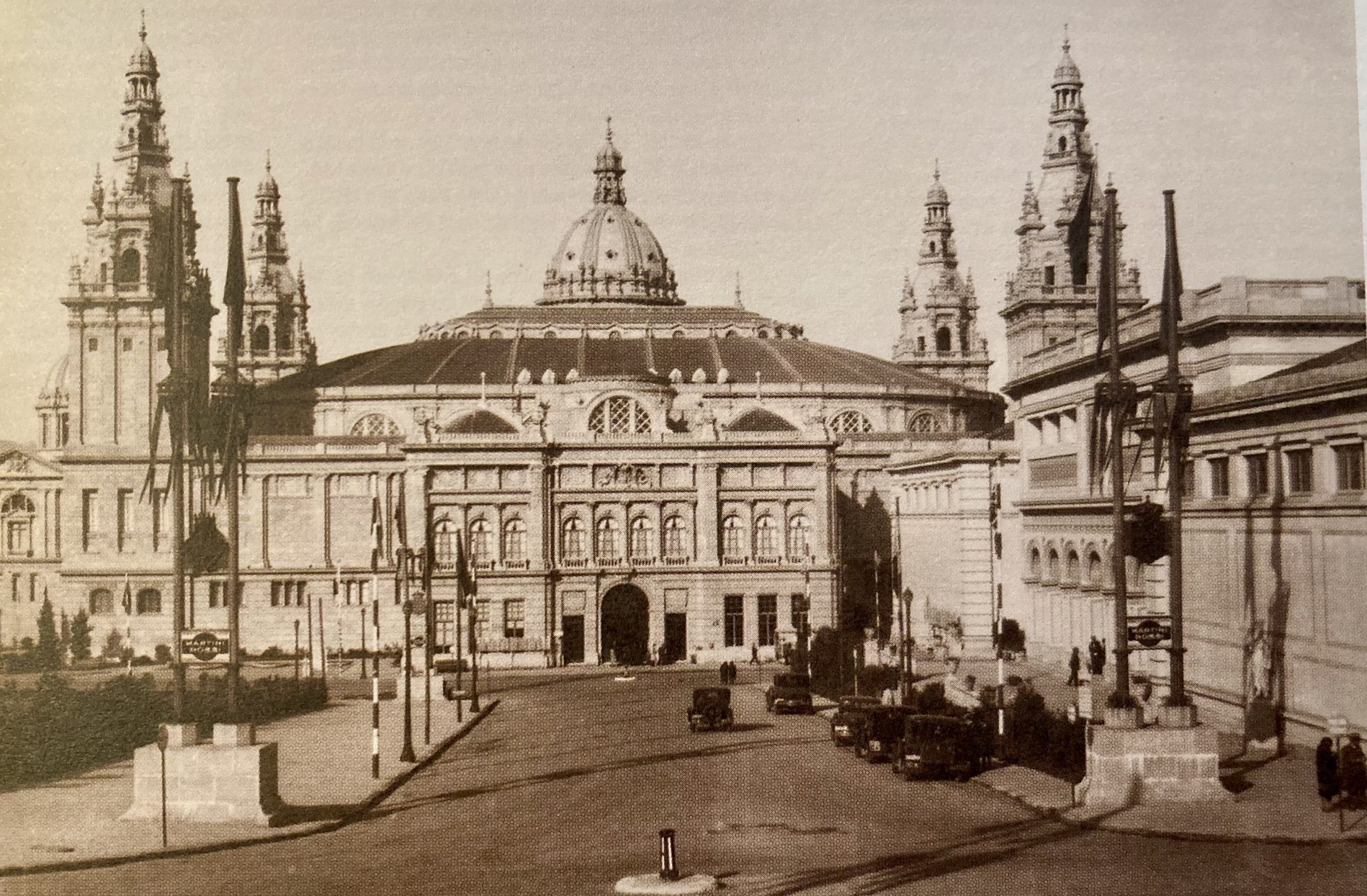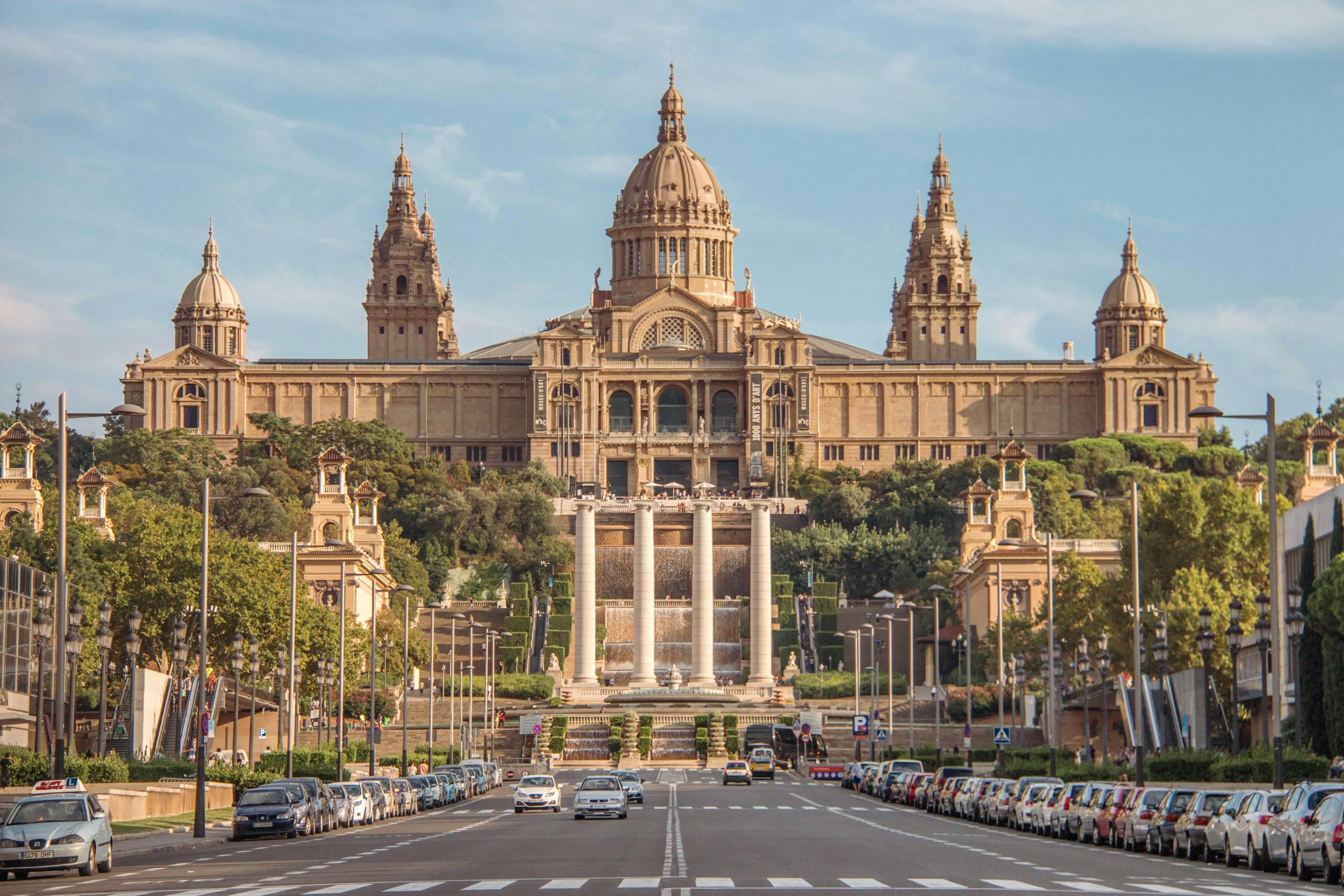Antonio Ortega
The instructions given to a novice draftsman to transfer notions of perspective to the composition of the drawing are very simple and intuitive: close to the horizon is far away, far from the horizon is near; large is near, small is far away, and we could continue with a list of other similar instructions. Similarly, deducing the hierarchy of the different architectural features from their location in the space is also very simple and intuitive.
In the case of the Museu Nacional d’Art de Catalunya building, what is surprising is that our perception of which architectural element is the most important does not coincide if we look at the museum from the inside or from the outside.
So, from the outside, we can agree that the most splendid thing is the dome of the façade. In order to make it as visible as possible and to impose the magnificent view of it when seen from the city, the building, which had been built with a floor plan inspired on a basilica, was rotated 180 degrees to thus offer the city the view of the dome that crowns the apse instead of the main doorway.
Thus, technically speaking, visitors to the museum do not enter by the main entrance but through a doorway that has been opened into what, in a real basilica, would correspond to the chancel. It is a space that traditionally has blind walls, whose job is to solemnly contain the altar, and which are usually voluptuously decorated with carvings or paintings like the one that is surely the most iconic of all the pieces in the Museum: the depiction of Christ in Majesty from Sant Climent in Taüll.
This rotation of the building means that the side corresponding to the main doorway is now the back facade and, moreover, the railing that encloses the gardens of the royal residence of the Palauet Albéniz has stripped the original perspective of its dignity, as there is nowhere to stroll and view. It is now the doorway that leads to the offices.

The dominant feature when we contemplate and understand the building from the inside is the reception area, which has always been permanent and fixed. It is a large area that we see positioned perpendicular to the building’s natural axis. It is the Oval Hall – the equivalent of the nave – that challenges the dome of the facade for prominence with respect to hierarchical importance.
From the outside, then, the view we have of the museum when walking up the Avinguda Reina Cristina is dominated by the outline of the dome of the façade. On the inside, on the other hand, the large Oval Hall dominates.

©Juan Eduardo De Cristófaro, 2013
A few years ago the museum made access to the building’s roof terraces possible, and going up there is part of the visit. The roof is dominated by different Churrigueresque-style domes that in their frivolousness present a contrast with the central dome of the façade. This was built taking as a formal reference Saint Peter’s Basilica in the Vatican, as was the dome of the United States Capitol in Washington. All three of them are similar in appearance but they differ drastically with regard to the feature that crowns the different lanterns. As you might expect, the dome of Saint Peter’s is crowned by a cross on a golden ball and that of the Capitol with a statue, of Liberty, on a pedestal with the inscription E pluribus unum.
Capitol dome in Washington / Saint Peter of Vatican’s dome in Rome
It should be added that the representations of the Cross and Liberty both have huge symbolic value, and that, in both cases, they moreover maintain a highly suggestive relationship with respect to the meaning and the function of the building they crown. So much so that the Vatican defines itself as the centre of Christendom and, in some ways, the Capitol as that of liberty.
In any case, the element that we find crowning the lantern of the dome of the façade of the Museu Nacional d’Art de Catalunya is a lightning conductor. It is not the only illogical feature that we find at the museum. The nine beams of light that light up the sky, silhouetting the museum, and which look like bolts of lightning shooting out from the building, are generated by anti-aircraft reflectors arranged at the bottom of the dome of the Oval Hall.


Lightning conductor hand installation on the dome of Museu Nacional. ©Museu Nacional d’Art de Catalunya-Marta Mérida
It should be said that the dome of the Oval Hall, as it is oval-shaped, does not end at a single point but in a line and both ends of this are occupied by a lightning conductor, while right in the centre of the dome there used to be none. I would also like to mention that on one side of the Christ in Majesty from Sant Climent in Taüll there is the Greek letter alpha, and on the other, omega, and bolts of lightning come from both of them, like those from the reflectors. In November 2021 we installed a lightning conductor in the centre of the dome of the Oval Hall with a metallic reproduction of the hand of Christ from Taüll at the top. Perhaps this hand has the power to defy the sky and, rather than stop the lightning bolts, send them back..


Lightning conductor hand installation on the dome of Museu Nacional. ©Museu Nacional d’Art de Catalunya-Marta Mérida
In any case the Lightning conductor hand appropriates the hierarchy of the space that it occupies, making the entire building that supports it a necessary pedestal, while interrogating it over its meaning, just as the Cross of Saint Peter’s and the Capitol’s Statue of Liberty do.









